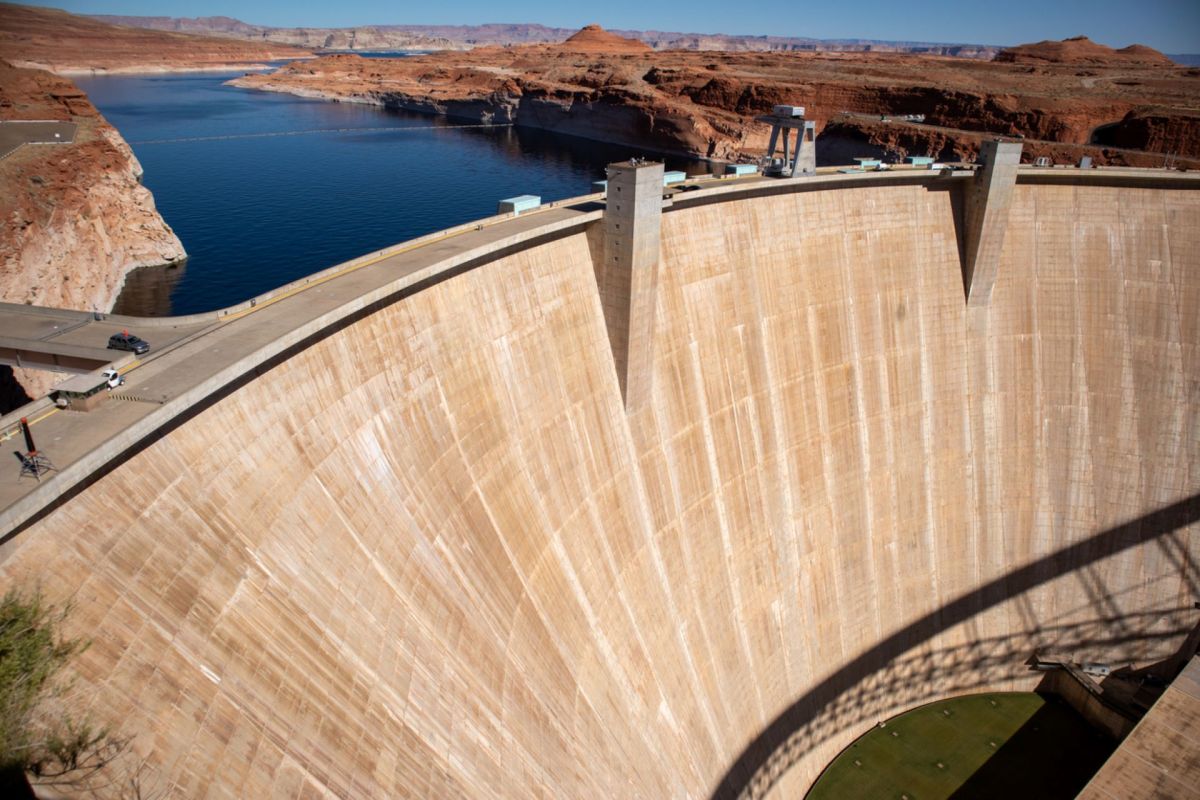It's been nearly a year since Lake Powell reached dangerously low levels, and though the human-made reservoir has risen since, there is still much cause for alarm.
Created in 1963, Lake Powell is a product of the Colorado River and Glen Canyon Dam. It has been drying up since 2000 because of a megadrought in the Southwest and unsustainable water usage, Newsweek reported last February. Even above-average rainfall and snowpack may not help, Robyn White wrote, a sentiment echoed by The Colorado Sun in August.
What's happening?
The main concern is that the lake, located in Utah and Arizona, will reach a "dead pool" of 3,370 feet, Newsweek also reported last year, which marks when the hydropower dam would be unable to function.
All 10 of the lake's lowest recorded readings were made in March and April. On April 12 and 13, the water level dropped below 3,520 feet. It climbed to a peak of 3,584 feet July 8, but it has been dropping ever since. Thursday's reading was 3,564 feet, and more than half of the boat launch ramps and other sites were inaccessible.
Lake Powell is in the same boat as Lake Mead, a couple of hundred miles away in Nevada and Arizona. The United States' two largest reservoirs, they rely on the Colorado River to provide water and electricity to millions of residents.
Lake Powell supports 5.8 million households and businesses in Arizona, Colorado, Nebraska, Nevada, New Mexico, Utah, and Wyoming, according to The Hill. Lake Mead provides power to 1.3 million Americans in Arizona, California, and Nevada, per CNN.
Why is this concerning?
"If dead pool were reached, it would be a catastrophe," Newsweek reported last February. "Much of life in the southwest U.S. exists as we know it due to the Hoover Dam — and dead pool would cause all its operations to cease."
Anthony F. Arrigo, who wrote a book about the dam, told the outlet: "Without the dam system along the Colorado, it's not hyperbole to say that the southwest would be virtually uninhabitable. The reason that the southwest exists as we know it today is because of the dams. There is no other reason."
Arrigo and Robert Glennon, a water policy and law expert and emeritus professor at the University of Arizona, told Newsweek that tribes, farms, and cities downstream would go kaput, naming Los Angeles and salad greens as victims.
What can be done?
"In the short term, Colorado River water users need to figure out how to use less water," Audubon Colorado River Program director Jennifer Pitt told Newsweek. "There is broad agreement that water uses need to be reduced by about 30%, but there's not yet agreement about who should use less. Seven states in the U.S. and two in Mexico rely on water from the Colorado.
"... In the longer term, as climate change continues to warm the region, the problem will get worse, so reducing carbon emissions has to be part of the solution as well."
The federal Bureau of Reclamation has proposed digging tunnels around the dam, restoring the river's flow, or lowering the power turbines to ground level, Denver's 9News reported last year, on the day of the historic low.
Gary Wockner, co-founder and executive director of the nonprofit Save the Colorado, told the television station the dam should be decommissioned.
"There's a huge opportunity here to right some historic environmental wrongs and perhaps make more logical sense about how we manage the entire river system," he said.
Eric Balken, executive director of the nonprofit Glen Canyon Institute, agreed.
"I think it would be foolish for us not to at least study the idea of fully phasing out that reservoir because it just is becoming more and more likely that it's going to drop into a dead pool scenario," Balken told Newsweek.
Join our free newsletter for cool news and actionable info that makes it easy to help yourself while helping the planet.









